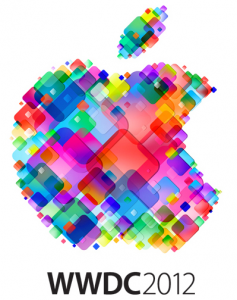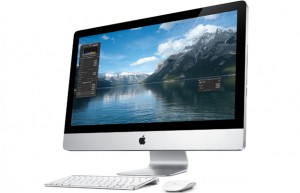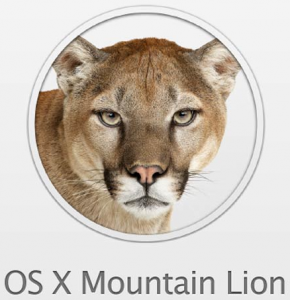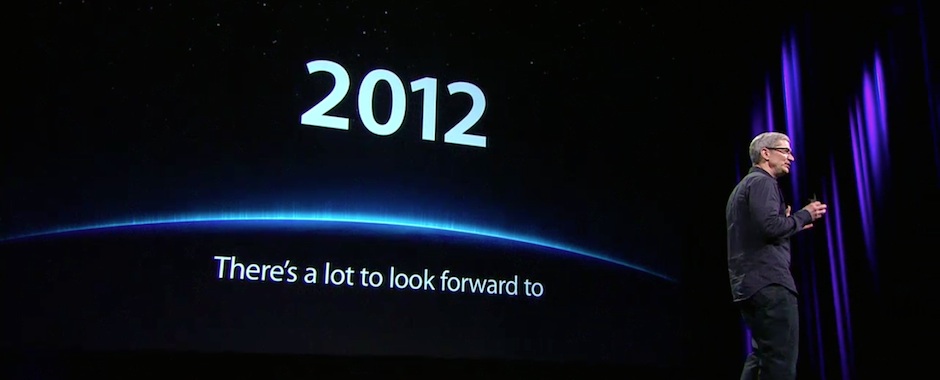Tim Cook promised us “a lot to look forward to” in 2012. Will Apple deliver?
 As Apple nears its annual Worldwide Developers Conference (WWDC) in early-June, some speculation is arising about the new Apple products we’ll see at Tim Cook’s keynote presentation. With eyes off the iPhone 6 until October, we turn to the next biggest product in the Apple lineup that people have all but forgotten: their computers.
As Apple nears its annual Worldwide Developers Conference (WWDC) in early-June, some speculation is arising about the new Apple products we’ll see at Tim Cook’s keynote presentation. With eyes off the iPhone 6 until October, we turn to the next biggest product in the Apple lineup that people have all but forgotten: their computers.
The iMac hasn’t seen a major refresh in a few years, and the MacBook Pro series is currently suffering from the same problem. We say problem, but we don’t quite mean it as harshly as it sounds; these machines aren’t exactly hard on the eyes.
But if you look at where Apple is going, it is clear that they’d like to do away with physical media altogether if they can, and it seems that they’re heading precisely in that direction.
 First up, the iMac. Desktop computers haven’t changed size much in the past few years. In fact, the iMac has bucked the trend of smaller and smaller computers as they’ve become larger and larger to accommodate larger screen sizes. We don’t exactly see the need for a screen larger than the current 27-inch behemoth Apple markets, but it couldn’t hurt to bring a 24-inch model back into the fold and get rid of the paltry 21.5-inch iMac.
First up, the iMac. Desktop computers haven’t changed size much in the past few years. In fact, the iMac has bucked the trend of smaller and smaller computers as they’ve become larger and larger to accommodate larger screen sizes. We don’t exactly see the need for a screen larger than the current 27-inch behemoth Apple markets, but it couldn’t hurt to bring a 24-inch model back into the fold and get rid of the paltry 21.5-inch iMac.
They won’t do away with the optical drive on the desktop in our estimation, but we’ll see a lot of the components for desktops become a lot smaller to reduce the bezel size and heft of the desktop, even though it isn’t designed to be portable.
The Mac mini likely won’t see a major change. It’s already lost its optical drive, and it isn’t too likely that it’ll get any smaller (have you seen the thing?), but it might have some tweaks for people who want to use it as an Apple TV, perhaps sporting HDMI support right off the motherboard. Couple that with a bluetooth keyboard, the Magic Trackpad, and you’ve got a complete solution for all your computing-through-the-TV needs.
 The last frontier for Apple’s hardware is their MacBook lineup. The MacBook Air managed to change the way people think about portable computers. Long gone are the days that we need optical drives, and Apple knows it. After all, they’re the ones making TV, movie, and music content available online without any discs. They’ve recently covered books and textbooks, and it doesn’t look like they’re going to be slowing down anytime soon. With that said, we’re predicting that none of the next notebooks Apple pumps out (with the exception of the 17-inch MacBook Pro workhorse model) will have any sort of optical drive. They’ll manage to make the computer thinner, lighter, and provide greater battery life, first because there is more space in the chassis, and second because there will be fewer motors spinning around in the thing.
The last frontier for Apple’s hardware is their MacBook lineup. The MacBook Air managed to change the way people think about portable computers. Long gone are the days that we need optical drives, and Apple knows it. After all, they’re the ones making TV, movie, and music content available online without any discs. They’ve recently covered books and textbooks, and it doesn’t look like they’re going to be slowing down anytime soon. With that said, we’re predicting that none of the next notebooks Apple pumps out (with the exception of the 17-inch MacBook Pro workhorse model) will have any sort of optical drive. They’ll manage to make the computer thinner, lighter, and provide greater battery life, first because there is more space in the chassis, and second because there will be fewer motors spinning around in the thing.
Beyond this, Apple will be able to sell, albeit in relatively small quantities, an external optical drive for those who really want it, or users can opt to use the Remote Disc feature that’s been available since the MacBook Air launched.

It all makes sense, too: Apple is usually the first to put new technologies into their hardware, often well before anyone else does it. We’re looking at you, FireWire. And you, Thunderbolt. Of course, they also built in the first commercially-available CDRW and DVD reader into their iMac DV models in the early 2000s. Given all this, shouldn’t Apple have picked a next-generation optical format by now? Well, considering Blu Ray has clearly won the format wars and Apple hasn’t implemented any of their units with the technology yet, it is clear what their stance on the matter is. And it makes sense why we expect to see thinner, lighter, and longer-lasting MacBook Pros in the next few months. But no, they won’t have a touchscreen.
When we look at Apple’s Operating System, OS X, we all know that their latest version, Mountain Lion, is on its way. We’ll likely get a release date for the software, but it’s already been confirmed that we won’t be getting it on physical media of any kind, with the company instead opting for a digital-only release through the Mac App Store. This just further lends credence to what we’re thinking about the changes we expect to see from Apple regarding their latest notebooks.
- Update: We also see Apple as the first major notebook manufacturer to include 4G (or at least 3G) connectivity in their laptops. Of course, that will require much more work on the carrier end of things as opposed to Apple’s, but it’ll be interesting to see how soon we’ll have 4G connected MacBook Airs.

